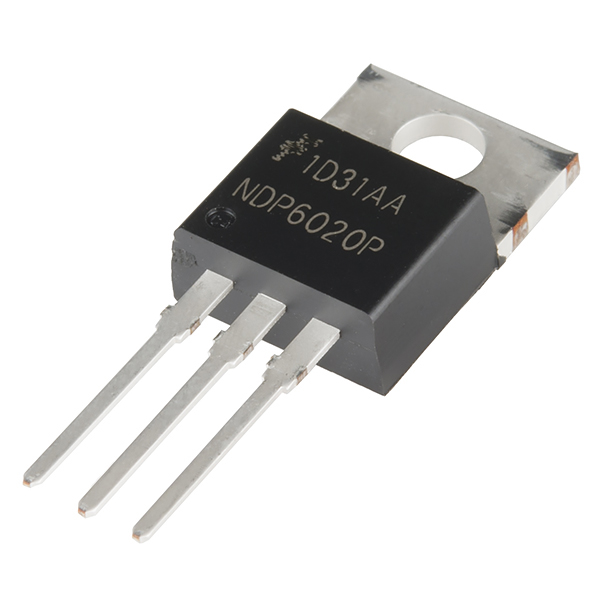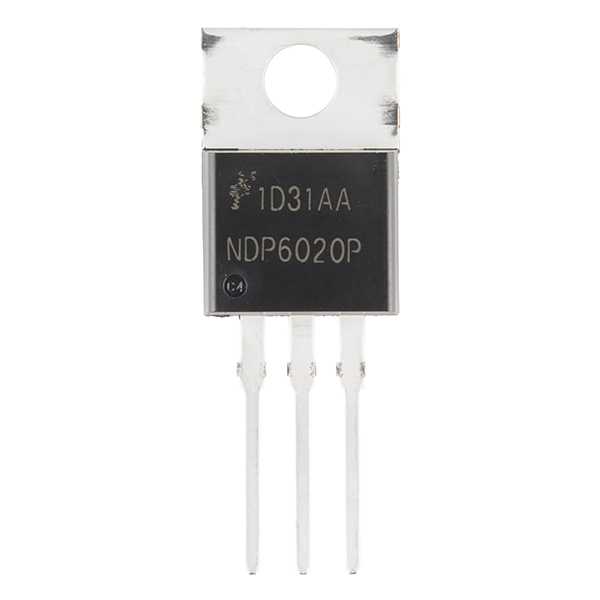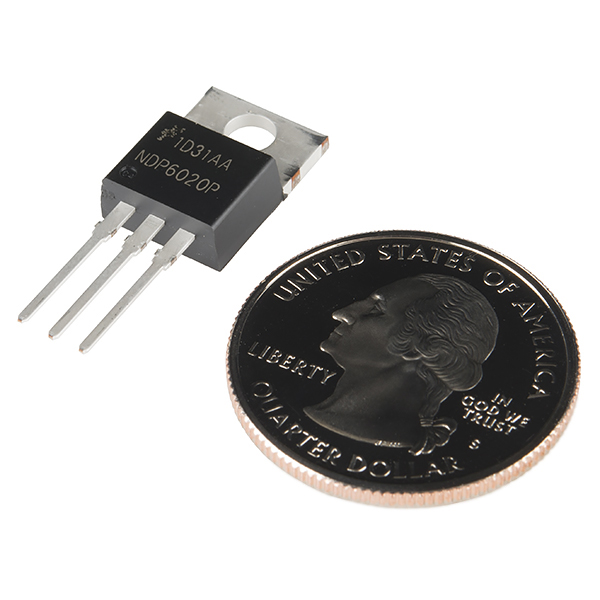P-Channel MOSFET 20V 24A - low Vgs(th)
If you’ve ever wondered how to control high current devices from a low-power microcontroller, a MOSFET is what you need. The NDP6020P is a very common MOSFET with very low on-resistance and a control voltage (aka gate voltage) that is compatible with most 5V and 3.3v microcontroller or mechanical switches. This allows you to control high-power devices with very low-power control mechanisms.
- [Datasheet](https://cdn.sparkfun.com/datasheets/Components/General IC/NDP6020P.pdf)
P-Channel MOSFET 20V 24A - low Vgs(th) Product Help and Resources
Core Skill: Soldering
This skill defines how difficult the soldering is on a particular product. It might be a couple simple solder joints, or require special reflow tools.
Skill Level: Noob - Some basic soldering is required, but it is limited to a just a few pins, basic through-hole soldering, and couple (if any) polarized components. A basic soldering iron is all you should need.
See all skill levels
Core Skill: Electrical Prototyping
If it requires power, you need to know how much, what all the pins do, and how to hook it up. You may need to reference datasheets, schematics, and know the ins and outs of electronics.
Skill Level: Competent - You will be required to reference a datasheet or schematic to know how to use a component. Your knowledge of a datasheet will only require basic features like power requirements, pinouts, or communications type. Also, you may need a power supply that?s greater than 12V or more than 1A worth of current.
See all skill levels
Comments
Looking for answers to technical questions?
We welcome your comments and suggestions below. However, if you are looking for solutions to technical questions please see our Technical Assistance page.
Customer Reviews
No reviews yet.




P-Channel MOSFET with logic level Gate is a great way to really beef up a digital output, to do some serious power switching. Thanks to the tiny Rdson, the heatsink is often optional. I did a YouTube video about using P-channel MOSFETs with Arduino, showing and discussing switching speed versus gate drive current, and comparison to (more or less) equivalent transistor circuit.
https://www.youtube.com/watch?v=cfN3rihW9-o
Coincidentally, I was using this same part, Fairchild NDP6020P.
The video above uses +5V for the high current source. But what if you need to switch 12V, or even higher? So I shot a second video that shows how to use a simple NPN transistor to drive the Gate, allowing the Source voltage to be much higher than the +5V, or +3.3V
https://www.youtube.com/watch?v=Csvw7RVc7QA
I wonder if the mounting tab is connected to the source or the drain? i.e. - is it hot?
Usually the tab is connected to the centre pin on a TO220 package.
Ah the ever useful Mosfet. My favorite use for the P-Mosfet is to use it to disconnect a battery source from the circuit if something like say usb is connected. Combined with a charging circuit and you get a circuit that intelligently recharges the battery while the external source powers the project aswell without interfering with the charging.
Just one of many uses for the P-Mosfet.